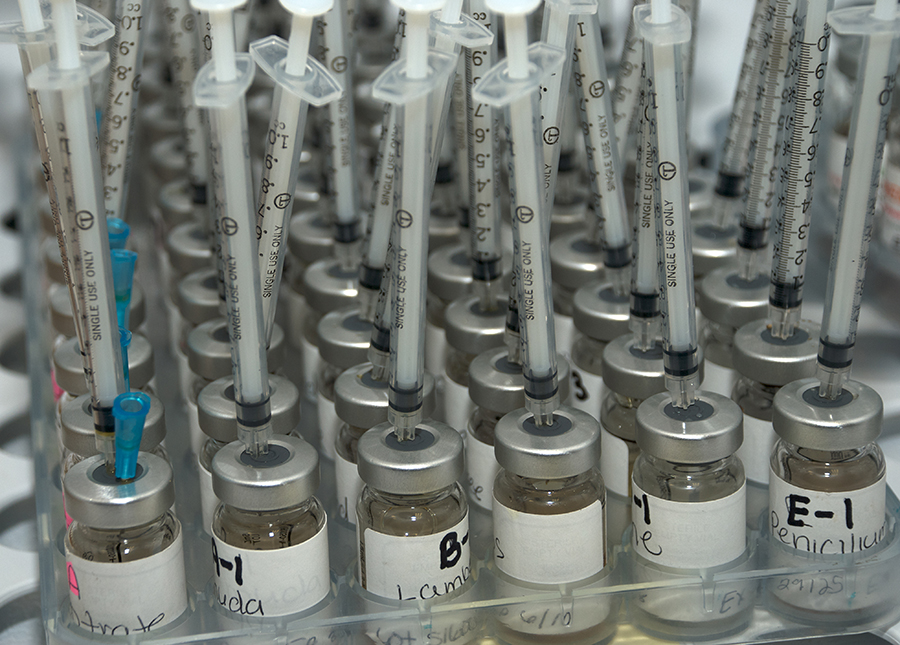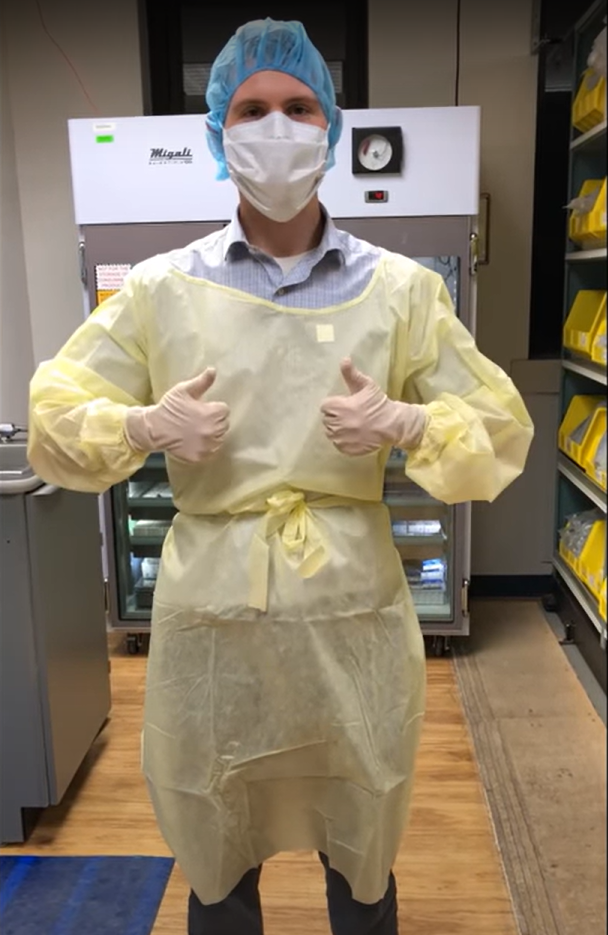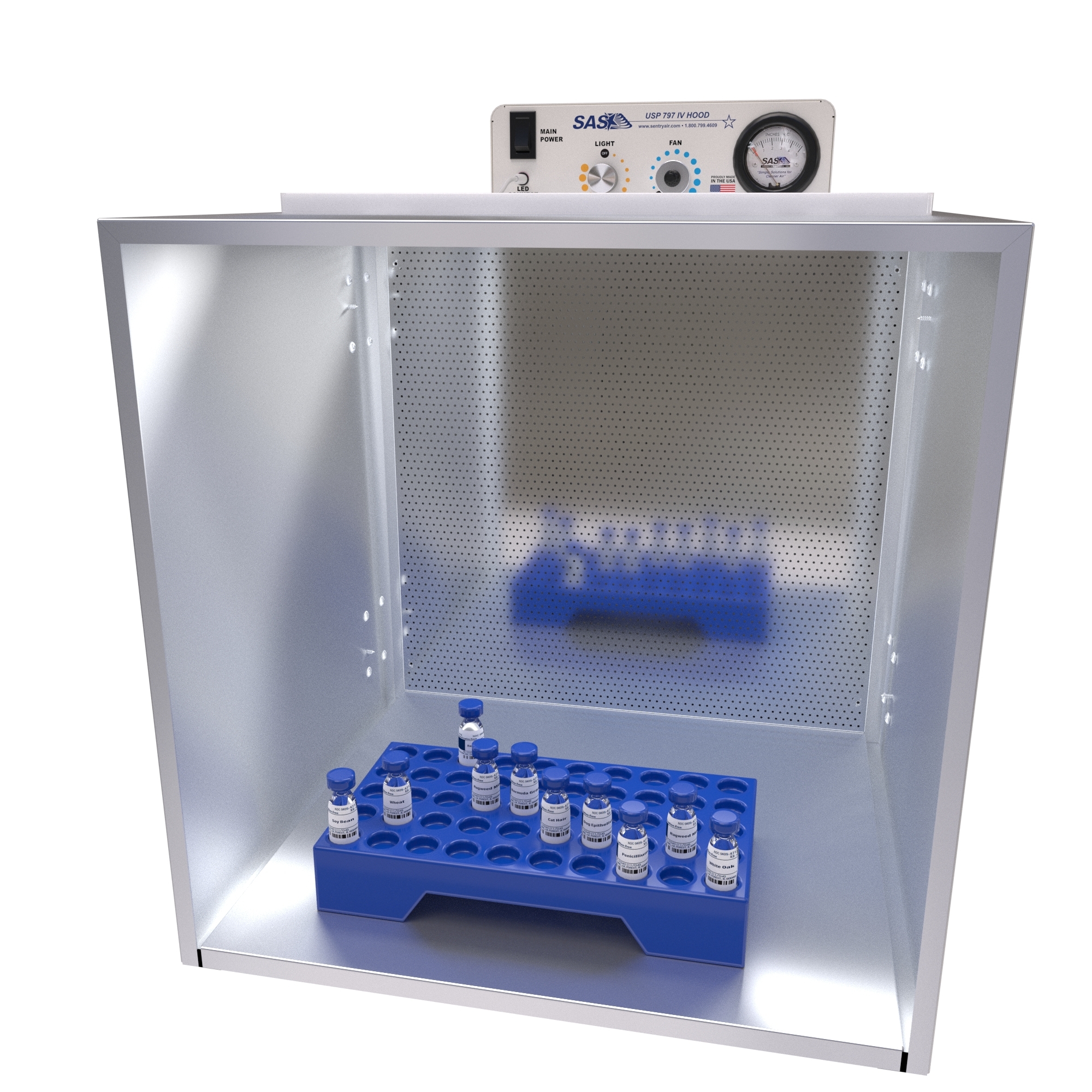
Allergy Practices must follow USP 797 when compounding or mixing allergenic extracts for individual patients.
Allergy, ENT, and immunology practices must follow USP 797 when mixing patient-specific allergen extracts for subcutaneous immunotherapy (ACAAI 2023). Section 21 of USP 797 outlines the requirements for compounding allergen extracts to minimize the risk of contamination and ensure the patient’s overall health is protected. USP 797 requirements apply to mixing allergen extracts for allergy testing and regular immunotherapy. Allergists used to be exempt from USP 797 guidelines but USP specifically wrote Section 21 for compounding allergen extracts which took effect November 1, 2023 (ACAAI 2023).
What is USP 797 Section 21 the Allergy Exception?
USP 797 Section 21 outlines the safe practices for allergenic extract mixing to help protect patient safety. USP created a specific section for allergen extracts because mixing allergenic extracts varies greatly from regular compounding (ACAAI 2023). Section 21 details the requirements for personnel, garbing, facilities, cleaning, BUDs, labeling, transportation, and documentation. The purpose of USP 797 Section 21 is to help protect patient safety, help improve the sterility of extracts, and protect the reputation of allergists and ENT specialists (Fuel Medical 2023). The next section of this blog will briefly summarize the USP 797 Section 21 requirements.
USP 797 Section 21 Summary

Medical worker illustrating the proper way to garb for USP 797 (Taylor 2019).
Personnel
Allergy practices must designate an individual in charge of training other personnel in USP 797 practices. Personnel training must be completed, documented, and evaluated every 12 months. Personnel that have not compounded in the past 6 months must be reevaluated to ensure comprehension (ACAAI Appendix 5).
Garbing
Proper garb must be low lint, fitted at the wrists and neck, and include head covers, masks, and sterile powder-free gloves. Personnel must rub their gloves with 70% IPA throughout compounding (ACAAI Appendix 5).
Facilities
Mixing of allergenic extracts must be completed in a specified location called the allergenic extract compounding area (AECA) or in a primary engineering control (PEC) that meets ISO Class 5 cleanroom standards (ACAAI Appendix 5). This section will be explained in further detail in the next section.
Cleaning
All surfaces must be cleaned daily and after suspected contamination. The horizontal work surface must be cleaned in between each prescription set. 70% IPA is the recommended cleaner (ACAAI Appendix 5).
BUDs
The beyond-use-date must be before the earliest expiration date of the allergenic extract and a maximum of 1 year after compounding (ACAAI Appendix 5).
Labeling
Labeling must include the patient’s name, type of extract, dilution, BUD, and required storage information (ACAAI Appendix 5).
Shipping
Transportation must deliver vials in undamaged, sterile, and stable condition (ACAAI Appendix 5).
Documentation
The designated in-charge personnel must keep all proper documentation including SOPs, training records, PEC certification reports, temperature logs, compounding records, adverse events, and investigations/corrective actions (ACAAI Appendix 5).
USP 797 Allergenic Extracts Compounding Facility Requirements
Mixing or compounding of allergen extracts for individual patients must be conducted in an allergenic extract compounding area (AECA) or a primary engineering control (PEC) that meets ISO Class 5 such as a Laminar Airflow Workbench. The American College of Allergy, Asthma & Immunology recommends implementing an AECA due to its simplicity; however, PECs offer greater protection and patient safety while offering a more sterile environment (ACAAI, 2023). Also, AECAs require extensive cleaning as all surfaces have to be sterilized including the walls, ceiling, floor, work surfaces, etc. PECs have a much smaller surface area, which allows for an easier cleanup.
Laminar Airflow Workbenches Advantages
First, Laminar Airflow Workbenches help prevent contamination by supplying ISO Class 5 air to the workspace. To meet ISO Class 5 cleanroom standards, the filtered air within the hood must have less than 3,520 particles per cubic meter sized 0.5 microns (Farquharson 2023). Similarly, Laminar Airflow Workbenches provide a unidirectional airflow in a horizontal motion. This uniform, consistent airflow helps push particles out, improving cleanliness. Likewise, these systems offer a compact controlled space that takes up less room, ideal for smaller practices. Also, Laminar Airflow Workbenches are easier to clean than AECAs due to less surface area.
USP 797 Solutions for Allergy Clinics

USP 797-Certified Laminar Airflow Workbench offers a sterile workspace ideal for mixing allergy serums.
Laminar Airflow Workbenches from Sentry Air provide a primary engineering control (PEC) that meets ISO Class 5 cleanroom standards. We specifically designed this hood to meet USP 797 for IV clinics; however, this system can also be used in allergy clinics. Laminar Airflow Workbenches offer a sterile workspace with a small footprint and easy installation. These hoods help reduce outside contamination by supplying HEPA-filtered air to the workspace.
Benefits of the USP 797 Certified Laminar Airflow Workbench
• USP 797 certified
• ISO Class 5 cleanroom
• Horizontal unidirectional airflow
• Stringent in-house and 3rd party testing following CETA’s CAG003 (the industry standard for certifying sterile compounding facilities)
• User-friendly control panel – adjustable LED light, fan speed control, and a Magnehelic gauge to monitor the filter’s static pressure/filter saturation.
• Small Footprint
• Supplies HEPA filtered air
• Made in the USA
• Backed by expert support
• Quick Lead Time – ships in 5 business days

The USP 797-Certified Laminar Airflow Workbench includes an easy-to-use control panel with fan/light controls, and a Magnehelic gauge to monitor the filter’s saturation.
Dimensions (Depth x Width x Height):
Outer: 25” x 19.5” x 21.75”
Interior: 15.5” x 17” x 17”
Access Area: 17” x 17”
Approximate Airflow: up to 418 CFM with HEPA filter
Light Intensity: 1800 LUX at work surface


Disclaimer: The information herein is provided solely as a customer service and for informational purposes only. No representation or warranty, express or implied, is made as to the accuracy or completeness of such information. Customers are solely responsible for independently verifying the accuracy and suitability of the information for their intended use.
Help improve medication safety for compounding allergenic extracts with USP 797 Certified Laminar Airflow Workbenches from Sentry Air. Contact us today!
Related Blogs
• USP 797 Guidelines for IV Bag Preparation
• Help Prevent PCR Contamination with Laminar Flow Hoods
• Proper IV Bag and Medication Preparation Can Help Save Lives
References
ACAAI. (October 2023). 2023 – USP 797 Implementation Nov. 1. American College of Allergy, Asthma, & Immunology. Retrieved from: https://college.acaai.org/2023-usp-797-implementation-nov-1/.
ACAAI. Appendix 5. USP Section 21 – Compounding Allergenic Extracts. American College of Allergy, Asthma, & Immunology. Retrieved from: https://college.acaai.org/wp-content/uploads/2021/01/Section-21-USP-Compounding-Allergenic-Extracts.pdf
Farquharson, G., Goldschmidt, N. (March/April 2017). Understanding Cleanliness Classifications for Life Science Facilities. ISPE. Retrieved from: https://ispe.org/pharmaceutical-engineering/march-april-2017/understanding-cleanliness-classifications-life-science.
Fuel Medical. (October 2023). Managing Your Allergy Department’s Workflow with USP 797. Retrieved from: https://fuelmedical.com/managing-your-allergy-departments-workflow-with-usp-797/.
Taylor, Daniel. (2019, Jan 20). USP 797: How to Garb. Accessed May 30, 2024. https://youtu.be/u82S14pxF3I?si=o0iVJb_wZ9PxLSpm.

 Made in the USA
Made in the USA


